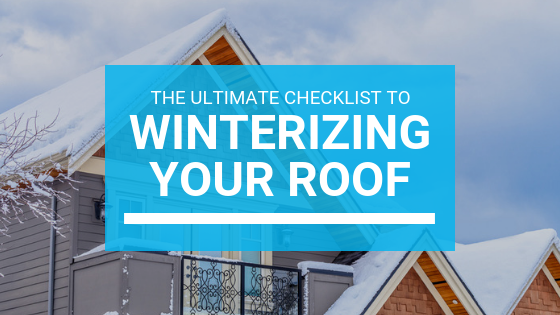The Ultimate Checklist for Winterizing a Roof

Are you ready for winter? As a homeowner, you need to make sure that you prepare adequately for winter. Winter deals with low temperature, severely cold winds, a lot of snow, and ice storms. It is very important to winterize the roof because the cold temperature has the potential of freeing water particles in the interior of the roof and on the roof, causing it to rot from the inside out if it is not addressed once the winter period ends. Winterize your roof with the checklist below. You can do it by yourself or call in a professional to help you carry out the winterizing.
Checklist for Winterizing the Roof before the Winter Season
- Inspect the roof to make sure that it is not missing shingles, loose, or damaged. Replace or fix any loose or damaged shingles to help your roof retain its quality during and after winter. Examine it from the ground at a safe distance that will allow you to see the entire roof surface. This is because climbing on to the roof is dangerous and has the potential of damaging it.
- Inspect the joints of the roof, skylights, flashing, and vents. The weather conditions affect their performance making them deteriorate during the winter period.
- Inspect the peaks and valleys of the roof. These areas are very susceptible to causing leaks especially during severe weather conditions such as thunderstorms or hailstorms.
- Thoroughly clean the downspouts and gutters to make sure that they are performing their draining functions properly. This will ascertain that they do not cause any leaks. Make sure that before you clean them, you remove all the accumulated materials such as twigs, leaves, and debris. This is because they can block the drains and cause the accumulated melted ice, rain, or water to spill off the roof. As you clean, check for any tears and wears on the gutters, because a protective roof needs a gutter system that functions. Additionally, watch out for any corrosion. This is a sure sign that you might need to replace your gutters. If you do not the gutters may break away from the main structure of the house leaving nothing to direct precipitation from the roof.
- Inspect the roof underlayment system. This will ascertain that it is capable of shielding the interior of the house from water-related problems or issues such as moving water, harsh rains, ice dams, and ice. This is an overlooked part of the roof. It has the potential of making your roof rot from the inside out. You might want to examine it for mould or humidity constantly that supports the growth of mould. If you smell any mildew or spot a stain, this is a sure sign of water damage that will only get worse once the winter season begins. Address it beforehand by calling a professional or cleaning and eliminating all the mould and mildew, personally.
- Eliminate the branches of the trees that are hanging overhead the roof. This is because they are likely to damage your roof in case you face a severe storm. The heavy branches will fall on the roof and cause dents that are costly to repair.

In Awe Roofing Limited is an Award-Winning, family owned and operated Vancouver Roofing Contractor with over 17 years of roofing experience. We serve the entire Lower Mainland area, from Whistler to Chilliwack, employing a team of professional staff members. Our team has won numerous awards including Best of Homestars for the last five years, and Three Best Rated six years in a row. Learn more






















